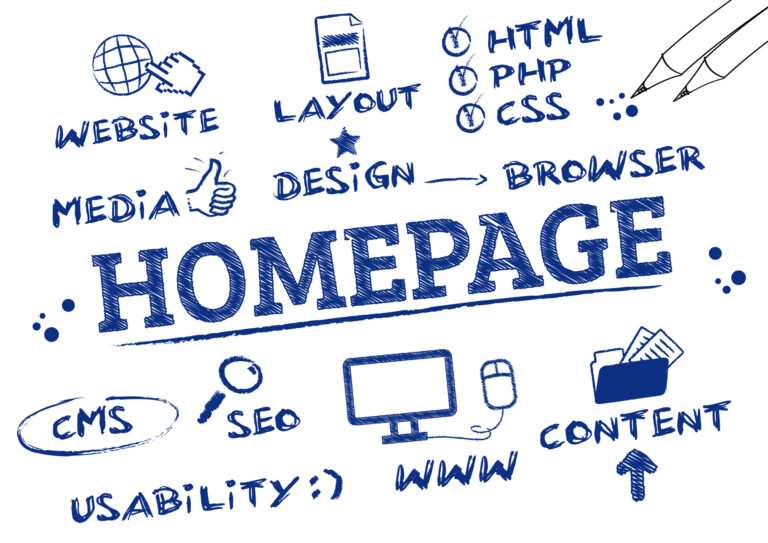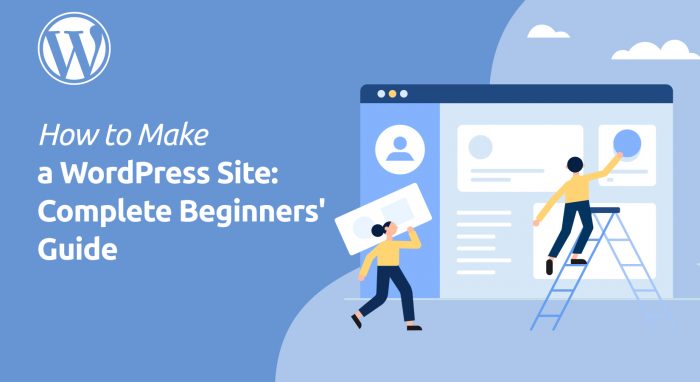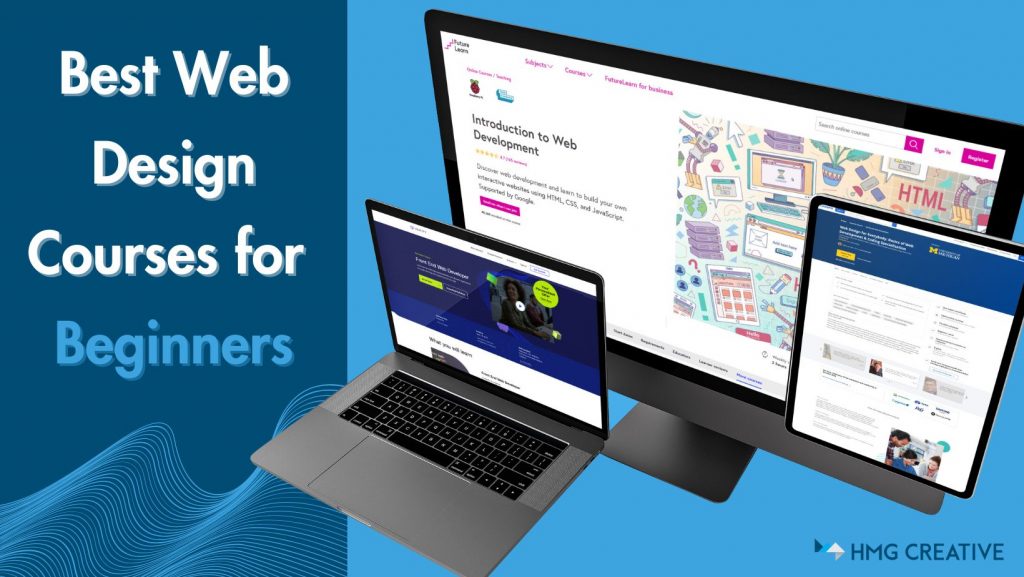In today’s digital age, having a website is essential for any business or individual looking to establish an online presence. A website serves as the virtual storefront for your brand and can help attract potential customers, engage with your audience, and showcase your products or services. However, the idea of building a website can be daunting for non-technical individuals. The good news is that with the advancements in technology, creating a website has become more accessible and user-friendly than ever before. In this ultimate guide, we will break down the process of building a website into simple steps, making it easy for non-techies to get started and achieve their online goals.
Why Building a Website Matters for Your Business and Personal Goals

Before diving into the technicalities of building a website, it’s important to understand why having one is crucial for both businesses and individuals. Here are some key reasons why building a website matters:
Establishing an Online Presence
In today’s digital world, having an online presence is a must for any business or individual. It allows you to reach a wider audience and connect with people from all over the world. With a website, you can showcase your products, share your thoughts and ideas, and build a community around your brand.
Building Credibility and Trust
Having a professional-looking website can help establish credibility and trust with your audience. A well-designed and informative website can make a great first impression and give your brand a sense of legitimacy. This can be especially important for small businesses or individuals trying to build a personal brand.
Increasing Brand Awareness
A website gives you the opportunity to reach a larger audience and increase brand awareness. By optimizing your website for search engines, you can attract potential customers and drive traffic to your site. Additionally, with the integration of social media platforms, your website can also serve as a hub for all your online activities, helping to further increase your brand’s visibility.
Cost-Effective Marketing
Compared to traditional forms of advertising, having a website is a cost-effective way to market your brand. With a website, you can reach a global audience at a fraction of the cost of print or TV ads. It also allows you to track your website’s performance and make data-driven decisions when it comes to marketing strategies.
Understanding the Basics: Website Structure and Components

Before you start building your website, it’s important to understand the basic structure and components that make up a website. Here are some key elements to keep in mind:
Domain Name
A domain name is the address of your website on the internet and is what people type in their browsers to access your site. It can be a combination of letters, numbers, and symbols, and should ideally reflect your brand or business name. You can purchase a domain name from a domain registrar, such as GoDaddy or Namecheap.
Web Hosting
Web hosting is the service that stores your website’s files and makes them accessible to the public. It’s essentially like renting space on a server to store your website. There are various types of hosting, including shared, VPS, and dedicated hosting. For non-techies, shared hosting is usually the most suitable and affordable option.
Website Builder or Custom Coding
When it comes to building a website, you have two options – using a website builder or coding it from scratch. A website builder is a user-friendly platform that allows you to create a website without any coding knowledge. On the other hand, custom coding involves manually writing the code for your website using programming languages such as HTML, CSS, and JavaScript. For non-techies, using a website builder is often the more manageable and efficient choice.
Content Management System (CMS)
A CMS is a software that helps you create, manage, and publish content on your website without the need for coding. It provides a user-friendly interface that allows you to easily add and edit text, images, and other media on your website. Popular CMS platforms include WordPress, Wix, and Squarespace.
Design Elements
The design of your website is crucial in creating a visually appealing and user-friendly experience for your audience. This includes elements such as color scheme, layout, fonts, and images. When designing your website, it’s important to keep your brand’s overall aesthetic and target audience in mind.
Choosing the Right Platform: Website Builders vs. Custom Coding

Now that you understand the basic components of a website, it’s time to decide on the best platform for building your site. Here are some factors to consider when choosing between a website builder and custom coding:
Ease of Use
Website builders are designed to be user-friendly and require little to no technical knowledge to get started. They offer drag-and-drop interfaces and pre-designed templates, making it easy for non-techies to build a website. On the other hand, custom coding requires a good understanding of programming languages and can be time-consuming for beginners.
Cost
Using a website builder is generally more cost-effective than custom coding. With website builders, you pay a monthly or yearly fee for the use of their platform, while custom coding may require hiring a developer which can be costly.
Flexibility
Custom coding offers more flexibility in terms of design and functionality compared to website builders. With custom coding, you have full control over every aspect of your website, allowing you to create a truly unique and personalized site. However, this also means that you will need to invest more time and effort into building and maintaining your website.
Support and Updates
Most website builders provide customer support and regular updates to their platforms, making it easy for non-techies to troubleshoot any issues and keep their website up-to-date. With custom coding, you may need to hire a developer for support and to make any necessary updates to your website.
Domain Names and Hosting: Securing Your Online Presence

Once you have chosen the platform for building your website, it’s time to secure your online presence by registering a domain name and choosing a web hosting service. Here are some tips for selecting the right domain name and hosting provider:
Choosing a Domain Name
When choosing a domain name, it’s important to keep it simple, memorable, and reflective of your brand or business. Make sure it’s easy to spell and avoid using numbers or special characters as they can be confusing. Additionally, it’s a good idea to choose a domain extension that is relevant to your target audience, such as .com for businesses or .gov for government organizations.
Selecting a Web Hosting Service
There are many web hosting providers available, and it can be overwhelming to choose the right one for your needs. Here are some key factors to consider when selecting a web hosting service:
- Reliability and uptime guarantee – Look for a host that guarantees at least 99% uptime to ensure your website is always accessible.
- Bandwidth and storage – Depending on the size and traffic of your website, make sure the hosting plan offers enough bandwidth and storage to accommodate your needs.
- Customer support – Choose a hosting provider that offers reliable customer support, preferably 24/7, in case you encounter any issues with your website.
- Scalability options – As your website grows, you may need to upgrade your hosting plan. Look for a provider that offers flexibility to scale up or down as needed.
- Pricing – Consider your budget when choosing a hosting plan, but also make sure you’re getting adequate features and support for the price.
Designing Your Website: Creating a Visually Appealing and User-Friendly Experience

Once you have secured your domain name and hosting, it’s time to start designing your website. Here are some key elements to keep in mind to create a visually appealing and user-friendly experience:
Choose a Design Template
Most website builders offer a variety of pre-designed templates to choose from. These templates serve as a starting point for your website’s design and can save you time and effort in building a website from scratch. Choose a template that best fits your brand’s aesthetic and customize it to make it your own.
Use High-Quality Images
Images play a crucial role in making your website visually appealing. Make sure to use high-quality images that are relevant to your brand and content. Avoid using stock images that may appear generic or overused. If you don’t have access to professional photos, there are many free stock image websites available, such as Unsplash and Pexels.
Keep the Layout Simple
A cluttered layout can make your website look unprofessional and confuse your audience. Keep your layout simple and easy to navigate. Use white space to break up text and images and make sure your important information is easily accessible.
Choose a Color Scheme
Colors can evoke emotions and have a significant impact on how your website is perceived. Choose a color scheme that reflects your brand’s personality and consider the psychological effects of different colors. For example, blue is often associated with trust and professionalism, while yellow can convey happiness and positivity.
Utilize Responsive Design
With more people accessing websites through mobile devices, it’s essential to ensure your website is optimized for all screen sizes. Most website builders offer responsive design, which means your website will automatically adjust to fit different devices. This ensures a seamless user experience and can also improve your website’s search engine ranking.
Content is King: Crafting Engaging and Informative Website Copy
Aside from design, the content on your website plays a crucial role in engaging and informing your audience. Here are some tips for crafting compelling website copy:
Know Your Audience
Before creating content for your website, it’s important to understand your target audience. Research their demographics, interests, and pain points, and tailor your messaging accordingly. This will help you connect with your audience and effectively communicate the value of your brand.
Use Clear and Concise Language
When writing website copy, avoid using technical jargon or complex language that may confuse your audience. Keep your sentences short and use simple language to convey your message clearly and efficiently.
Include Calls-to-Action (CTAs)
CTAs are essential in guiding your audience towards taking a specific action, whether it’s making a purchase, subscribing to your newsletter, or contacting you. Make sure your CTAs are clear, visible, and complement your overall website design.
Utilize SEO Techniques
Search Engine Optimization (SEO) is the process of optimizing your website to rank higher on search engine results pages. This can greatly increase your website’s visibility and drive organic traffic to your site. Some key SEO techniques include using relevant keywords, creating informative and valuable content, and building backlinks from reputable sources.
Optimizing Your Website for Search Engines (SEO)
In addition to optimizing your website through content, there are other technical aspects to consider when it comes to SEO. Here are some key elements to focus on:
Meta Tags and Descriptions
Meta tags and descriptions are HTML elements that provide information about your website to search engines. These include the title tag, which appears at the top of your browser tab, and the meta description, which is a brief summary of your page’s content. Make sure to include relevant keywords in these elements to improve your website’s SEO.
URL Structure
A clean and organized URL structure can also improve your website’s SEO. Use clear and descriptive URLs that include relevant keywords and separate words with hyphens instead of underscores. Avoid using long and complicated URLs that may be difficult for search engines to understand.
Image Optimization
Optimizing your images can also help improve your website’s SEO. Use descriptive file names and alt tags that include relevant keywords. This will not only help search engines understand your images, but it also improves accessibility for visually impaired users.
Adding Essential Features: Contact Forms, Social Media Integration, and More
In addition to design and content, there are some essential features that you should consider adding to your website. These features can help enhance the user experience and make it easier for your audience to engage with your brand. Here are some key features to consider:
Contact Form
A contact form is a simple and convenient way for your audience to get in touch with you. Make sure to keep the form short and ask for only essential information, such as name, email, and message. You can use a plugin or a form builder tool to easily add a contact form to your website.
Social Media Integration
Integrating your social media accounts to your website can help increase your brand’s visibility and drive traffic to your social platforms. Add social media icons that link to your profiles on your website’s header, footer, or sidebar. You can also display your social media feeds on your website using widgets or plugins.
Blog Section
Having a blog section on your website can help establish your brand as an authority in your industry and improve your website’s SEO. Share informative and engaging content related to your brand and products or services. This can also help attract potential customers through organic search traffic.
E-commerce Functionality
If you’re planning to sell products or services through your website, consider adding e-commerce functionality. This allows you to create an online store and accept payments directly on your website. Most website builders offer e-commerce integrations, making it easy to set up an online shop, even for non-techies.
Launching and Maintaining Your Website: Going Live and Keeping it Updated
Once you have completed designing and adding essential features to your website, it’s time to launch it and make it available to the public. Here are some key steps to keep in mind:
Testing and Quality Assurance
Before going live, make sure to thoroughly test your website to ensure everything is functioning as it should. This includes checking for broken links, typos, and design inconsistencies. You can also ask friends or family to test your website and provide feedback.
Go Live!
After testing and making any necessary changes, it’s time to go live with your website. Most website builders offer a simple process for publishing your site. If you’ve chosen to code your website, you will need to upload your files to your hosting server using an FTP client.
Keep Your Website Updated
To maintain a professional and up-to-date website, it’s important to regularly update its content, design, and features. This can include adding new products, writing blog posts, or changing your website’s design. Regularly updating your website can also improve its SEO and keep your audience engaged.
Beyond the Basics: Advanced Features and Growth Strategies
As your website grows and evolves, you may want to consider adding more advanced features and implementing growth strategies. These can help take your website to the next level and drive even more success. Here are some ideas to consider:
- Implementing a customer relationship management (CRM) system to track customer interactions and improve sales.
- Adding a chatbot to answer frequently asked questions and provide customer support.
- Investing in paid advertising to increase your website’s visibility and attract more traffic.
- Creating an email marketing campaign to reach potential customers and nurture relationships with current ones.
Video
Conclusion
Building a website may seem like a daunting task for non-techies, but with the right approach and tools, anyone can create a professional and successful website. In this ultimate guide, we have covered the basics of website building, from understanding its importance to choosing the right platform and designing a visually appealing and user-friendly site. Remember to keep your audience in mind, regularly update your website, and implement advanced features and strategies to take your online presence to the next level. With dedication and perseverance, you can create a website that effectively represents your brand and helps you reach your goals.





